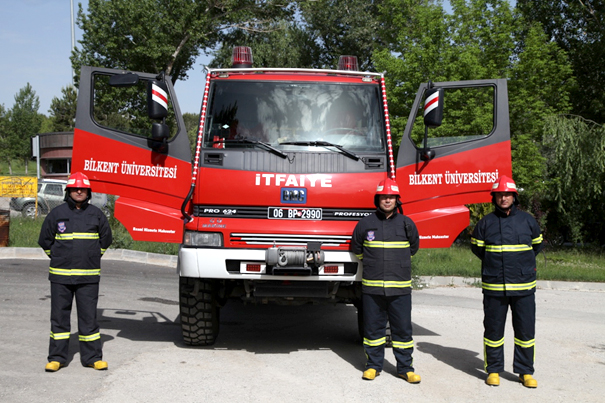
Many precautionary measures are in place to ensure the safety and security of everyone at Bilkent University. These various complementary policies and procedures, which are implemented throughout the campus from the entrance gates to the classroom buildings and the dormitories, require our cooperation; we all have responsibilities in creating and maintaining a safe environment on campus.
One such measure is the fire drill, also known as the evacuation drill since it applies not only to fires but other emergency situations as well. The purpose of such a drill is to ensure that everyone knows how to get out of a building as safely and quickly as possible if an emergency involving fire, smoke, carbon monoxide or some other danger occurs.
According to Campus Safety magazine, “the history of fire drills in schools dates back to major loss of life in school fires prior to modern detection and construction techniques.” A fire in a school in Chicago, Illinois, in 1958, where nearly one hundred students and teachers lost their lives due in part to not knowing how to get out of the building safely, was a key event. It led to recognition of the need for fire drills and their implementation on a regular basis in schools across the US; the practice continues today.
At Bilkent, the personnel in charge of the emergency evacuation plans in the buildings and facilities where students are concentrated, such as the dormitories and libraries, have been trained in evacuation procedures, and fire/emergency evacuation drills are conducted in those buildings. These exercises enable students to recognize the sound of the fire alarm and help them know what to do in case of emergency.
“As soon as students are shown their new rooms at the beginning of the academic year, the most important thing for them to do is learn where the emergency exits are,” declares Ahmet Özban, manager of the Bilkent Security Office. “Emergency exit locations are indicated in the corridors. Similarly, students should learn the location of the designated emergency meeting area outside their building, which is indicated by a green sign.”
Mr. Özban notes that Bilkent students have performed well in recent evacuation drills, with 14 dormitories evacuated in three to six minutes on average; around one thousand students exited the Main Library in the space of four minutes. This is, he says, a significant decrease from the times of previous years, adding, “Students have shown the necessary sensitivity and attention. They have participated in the evacuation exercises, some of which have been conducted without prior notice and late at night, with great maturity.”
The evacuation times for the individual dormitories during the most recent drills were as follows (in minutes:seconds, starting with the lowest time): Dorm 91, 3:00; Dorm 78, 3:15; Dorm 75, 4:00; Dorm 76, 4:00; Dorms 62-63, 4:04; Dorms 60-61, 4:10; Dorms 50-51, 4:40; Dorm 90, 6:31; Dorm 73, 6:49; Dorm 72, 7:09; Dorm 71, 10:12.
Evacuation drills will continue to be held over the course of the academic year to ensure continued readiness and safety.
The Security Office offers the following guidelines on precautions to prevent fires, and what to do in case you encounter a fire:
– Do not use electric heaters or flammable or combustible materials in your room. A fire can be started when an arc forms in a heater that has been left on.
– Be sure to unplug electrical items before going to bed or leaving your room.
– Do not leave candles or similar items burning unattended, i.e., while you are asleep or when you leave the room, even for a short time.
– If you see a fire or smell smoke, contact the Bilkent Emergency Call Center at 290-6666 immediately.
